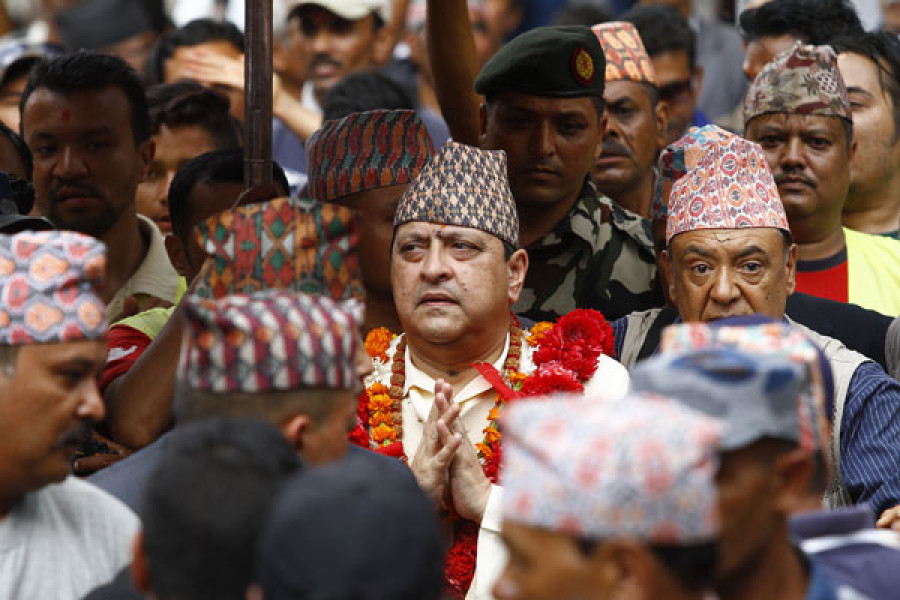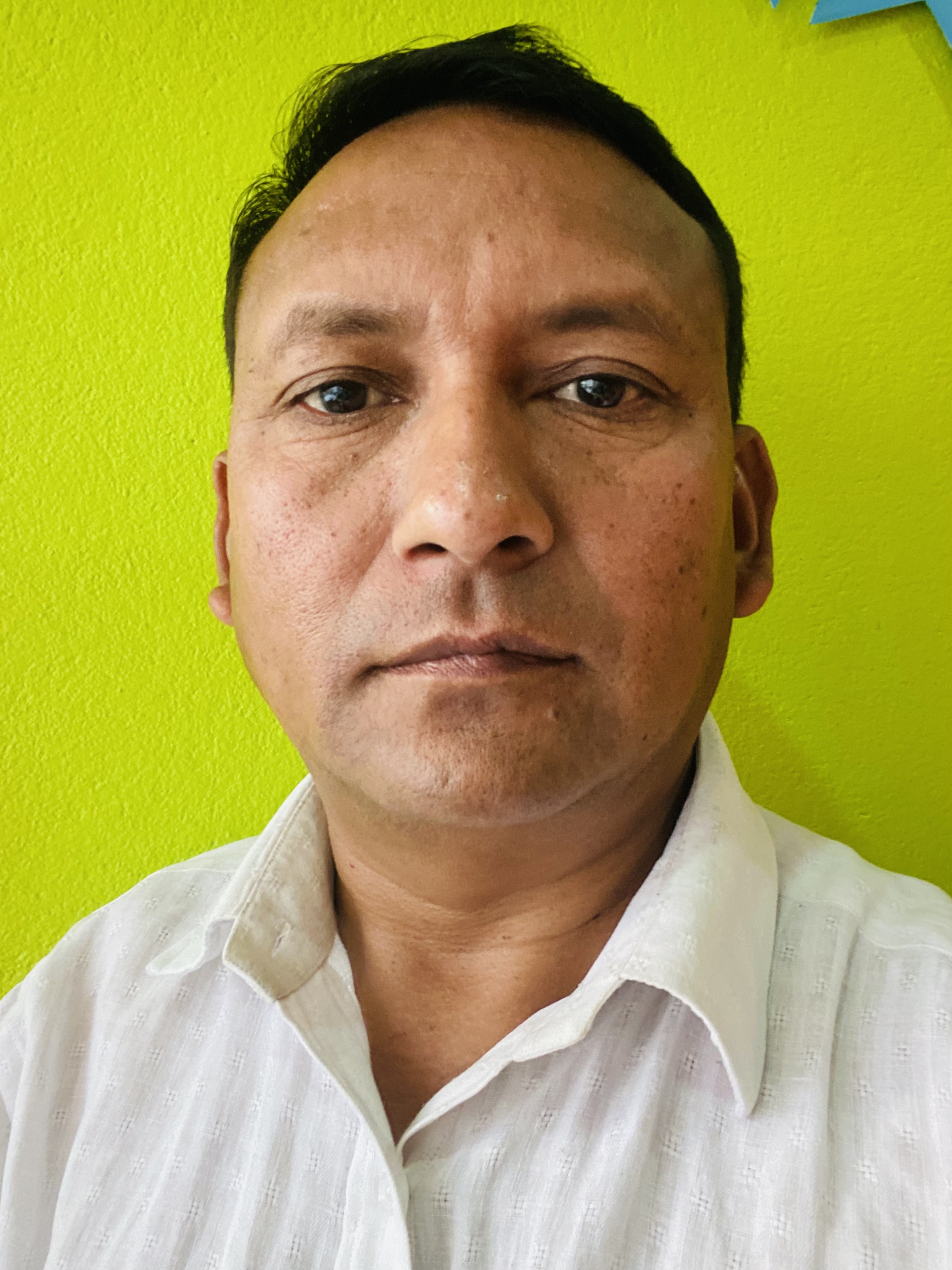Columns
Dangerously deluded monarchists
Sensible Nepalis should aim for the secular republic's reformation and revitalisation.
Mitra Pariyar
In his famous book The God Delusion (2006), Oxford evolutionary biologist Richard Dawkins considers the belief in god a “pernicious delusion”. In Nepal, where Shah kings long ruled with an iron fist under the alleged commandment of the Hindu gods, the idea of returning to monarchy now is also a delusion—an improbable and dangerous one at that.
One might then ask: Why are people thronging wherever the ex-king goes? Why are the voices clamouring for his return to save the nation getting louder?
Following the ex-king
Nothing could be more farcical than the idea of returning the monarchy, a Hindu monarchy, to rid the nation of its current plight. One need not be a genius to understand that simple fact. The Shah dynasty, as well as the Rana dynasty for over a century since Jung Bahadur’s bloody coup in September 1846, laid the foundations for Hindu rule and its vertical caste structure. The latter has been the principal cause of the great inequality, social disharmony, discord, and, above all, the nation’s persistent lack of economic progress.
One should read Professor Dor Bahadur Bista’s 1991 book, Fatalism and Development, to understand my point. He demonstrates how Brahmanism, instituted by the kings and their Brahmin courtiers, has seriously impeded the social and economic development of the Himalayan nation over the centuries.
Many people seem to still support former King Gyanendra. In their hearts, as a descendant of Prithvi Narayan Shah, he is still the king. But it is important to understand that this support for the monarchy is only cultural and religious—not political.
In the traditional Hindu culture, there is no society without a Chhetriya king and his Brahmin advisors. There’s no imagination of a nation-state without an upper-caste Hindu ruler. All the Hindu mythical stories concern the power and awe of Brahmin sages and Chhetri kings (and princes and their close kin). Quite often, there’s a vicious power struggle between the learned and wise Brahmins and politically powerful Chhetri kings.
Predominantly, Hindu Nepali society is highly religious and spiritual. So, the masses seem disorientated, as it were, to be living in a nation or society sans Hindu monarch. They miss the king and show their reverence to the ousted monarch; they even receive his blessings during Dashain.
But the same people are not going to vote for him, which is puzzling yet true. Many Nepalis celebrate the king as their religio-cultural mooring but not as a source of political power. Given the history, Nepalis no longer trust the king as a political leader. So, it is unlikely for Gyanendra to get elected as a prime minister even if he forms his own party and contests elections. Forget about the Rastriya Prajatantra Party flourishing with their agenda of Hindu monarchy.
Little support for monarchy
Let me give a bit more concrete evidence to support my argument that the king’s return to power in contemporary Nepal is well-nigh impossible.
Pro-monarchy voices appear louder simply because the mass media, including social media, is dominated by upper-caste hillmen. They are the ones asking questions, and they are the ones responding to those questions. They are the commentators on TV and writers in national newspapers. One rarely hears a balanced view on anything in the media, as the representatives of the vast majority of the oppressed communities do not get a chance to speak their minds.
Today, the political movements of most of the marginalised groups and communities may have died out, but that doesn’t mean the suppressed people have forgotten their long-standing issues. Who in their right mind would believe—for instance—that the Madheshis support a deposed king from the hills? It’s the Shah regime for over two and half centuries that promoted hill racism, portraying the citizens originally from Madhesh as foreigners.
Most other ethnic minorities, including the Janajatis and/or Mulbasis, have no incentive for supporting a Hindu monarchy either. Starting with Prithvi Narayan Shah, Thakuri kings and Kunwar prime ministers consolidated the Hindu caste hierarchy and rendered them inferior—and deprived them of their basic civic and human rights, including the right to acquire education and wealth. They destroyed or damaged most of the indigenous cultures, customs, languages and religious traditions. They sold the young men from the Gurung, Magar, Rai and Limbu communities as the cannon fodder of the British. Many ethnic minorities consider Rajendra Lingden, the RPP leader from a Limbu family, as a selfish betrayer.
Slowly but surely, Dalit communities too have become increasingly aware of the historical reality that Shah and Rana rulers used Hindu politics, based on religious texts like Manusmriti to vanquish them—and to reduce them to veritable slaves. We can now blame political parties for not doing enough to liberate Dalits, but we certainly understand that they did not start and institutionalise this highly oppressive caste system. The Hindu monarchs did!
Likewise, women continue to suffer because of the patriarchal system instituted by Shahs and Ranas. They have little to be grateful to the kings of the bygone era.
So, where is the popular support for the resurrection of the Hindu monarchy? It is only a fraction of the Bahun and Chhetri communities—particularly those frustrated by not being able to gain much under the current system.
In fact, overall, the return of monarchy is an agenda of the Chhetris only. This second tier is understandably angry at the unprecedented loss of their power and status at the hands of the new rulers, a vast majority of whom are hill Bahuns. So, as in the Puranic stories, there is now a power struggle going on between Chhetris and Bahuns.
Republic no culprit
So, the people trying to retrieve the Hindu monarchy are steering a dangerous course. The powers that be, the powerful Bahuns, are not going to allow the king to return to his throne. Neither is there a popular support for monarchy, as I have shown earlier. The rising tide of Hinduvta politics in India could eventually precipitate the return of a Hindu state in Nepal—but not of the Hindu monarchy.
Nepal will thus likely face dangerous instability if the former king is foolish enough to attempt a comeback. Rather, sensible Nepalis should aim for the reformation and revitalisation of the secular republic—to democratise our parties and make leaders accountable. The absence of a king is not the real problem; elected party leaders emulating the king’s attitudes and behaviours is the crux of our problem now. Let us not throw the baby out with the bathwater.




 16.12°C Kathmandu
16.12°C Kathmandu















